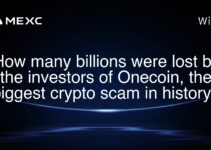Yes, Solana is considered an inflationary cryptocurrency. Its protocol includes a defined inflation schedule, which gradually decreases over time until it reaches a long-term fixed inflation rate. This design is intended to encourage participation and security in the network while also providing a disincentive for holding the currency without using it.
Importance of Understanding Solana’s Inflationary Nature
For investors, traders, and users of Solana, understanding its inflationary mechanism is crucial for several reasons. Firstly, inflation impacts the potential return on investment as it affects the supply of tokens and, consequently, their value. Secondly, for traders, inflation data can guide short-term trading strategies, especially in arbitrage and market timing scenarios. Lastly, for everyday users, the inflation rate can influence decisions on whether to hold Solana tokens or use them, depending on the expected depreciation or appreciation of token value over time.
Real-World Examples and Updated Insights (2025)
Initial Inflation Schedule and Adjustments
Initially, Solana’s inflation rate started at 8% per year and was scheduled to decrease by 15% each year until it stabilized at a long-term rate of 1.5%. This approach mirrors strategies seen in other cryptocurrencies that aim to reduce inflation as the network matures and becomes more secure. By 2025, the inflation rate of Solana has adjusted close to its target long-term rate, influencing both the trading volume and the price stability of the token.
Impact on Staking and Network Security
Staking is a significant aspect of the Solana network, where validators are rewarded with newly minted SOL tokens. The inflationary policy ensures that as more tokens are staked, the security of the network is bolstered, but the rewards are balanced against the increasing total supply. This mechanism has helped maintain a robust and secure network, as evidenced by the growth in the number of validators and the amount of SOL staked by 2025.
Practical Applications Influenced by Inflation
Applications built on Solana, such as decentralized finance (DeFi) platforms and decentralized apps (dApps), are directly affected by the inflation rate. For instance, DeFi protocols adjust interest rates on lending and staking based on the inflation to ensure competitiveness and attractiveness for users. This dynamic adjustment helps maintain an active user base and ensures the long-term viability of financial products offered on the Solana blockchain.
Data and Statistics
As of 2025, Solana’s network has grown to over 20,000 validators, with approximately 75% of the total SOL supply being staked. This high staking ratio underlines the community’s trust in the network’s security and stability despite the inflationary token issuance. Moreover, the annual increase in the total token supply has been closely aligned with the projected rates, confirming the effectiveness of Solana’s inflationary policy in regulating supply and promoting network participation.
Conclusion and Key Takeaways
Solana’s inflationary model is a fundamental aspect that influences every facet of its ecosystem, from token economics to network security. By understanding how Solana’s inflation works, stakeholders can make more informed decisions regarding investment, trading, and participation in the network. The gradual reduction in inflation rate is designed to stabilize the token’s value over time, making it an attractive feature for long-term investors. For traders, the predictable decrease in inflation provides a clear framework for strategizing. Finally, for users and developers, the inflation rate impacts the economic viability of using and building on Solana, ensuring that the network remains competitive and secure as it scales.
Overall, while Solana is inflationary, its well-structured inflation mechanism supports a robust, growing, and secure network, benefiting all participants in its ecosystem.
DISCLAIMER
Article(s) displayed above is/are generated by artificial intelligence (AI) and may not be manually reviewed by a member of the MEXC team before it is published. The content displayed above does not represent the views of MEXC or its affiliates. Similarly, MEXC does not endorse the accuracy or truthfulness of the above data. Under no circumstance should reliance be placed on the above information. You are recommended to consult a professional, independent advisor where necessary.



